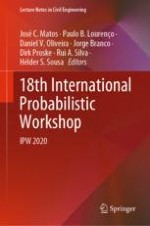2021 | OriginalPaper | Chapter
Risk-Driven Decision Making Within the Observational Method: Case Study Based on the New International Airport of Mexico City
Authors : Antonios Mavritsakis, Martin de Kant, Joost van der Schrier
Published in: 18th International Probabilistic Workshop
Publisher: Springer International Publishing
Activate our intelligent search to find suitable subject content or patents.
Select sections of text to find matching patents with Artificial Intelligence. powered by
Select sections of text to find additional relevant content using AI-assisted search. powered by
